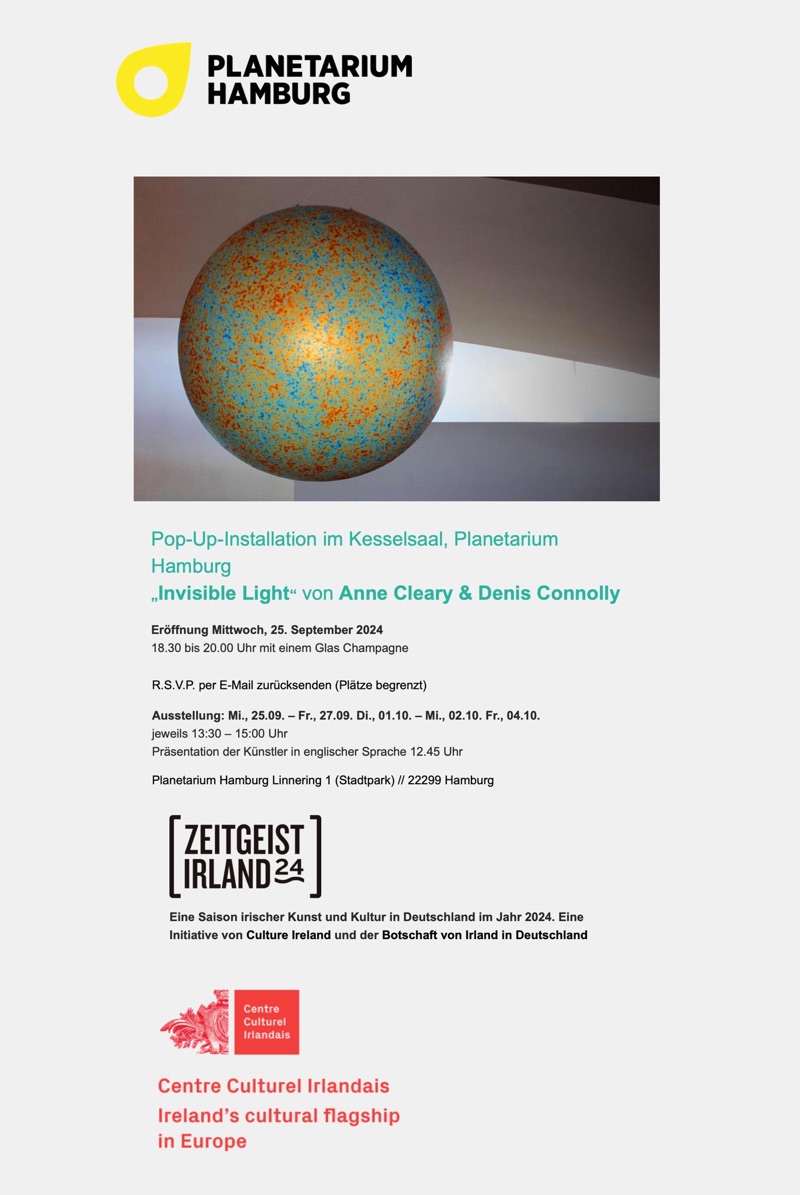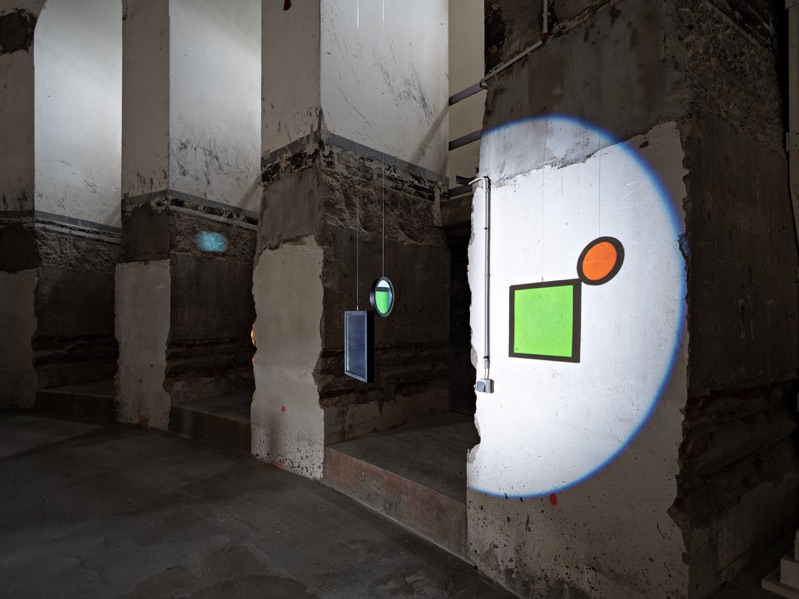
SPECTRAL
Prism
80cm x 15cm x 15cm
School of Looking
2024
SPECTRAL
We call the central band of the electromagnetic spectrum, the part that we and some other primates see, “visible light”, but in fact most animals do not see colours as we do. Mammals (horses, dogs, cats...) are mostly dichromats, and see wavelengths in the blue and yellow areas of the spectrum. The Mantis Shrimp has four times as many colour receptors as we do. But what can a creature with such a relatively tiny brain do with all this colour information?
A VISION REVOLUTION 2. Gamma & X rays (27’44”)
Light slows down as it enters a prism and this change of speed is accompanied by a change of direction (refraction). Each wavelength refracts at a different angle thus splitting the light into a rainbow of colours: the spectrum that is visible to the naked human eye.
Dichroic glass is a type of glass that displays multiple hues depending on the angle of viewing and ambient lighting conditions. The word dichroic comes from two Greek roots: “di” meaning two and “chroma” meaning colours.
Das Licht wird langsamer, wenn es in ein Prisma eintritt, und diese Geschwindigkeitsänderung geht mit einer Richtungsänderung (Brechung) einher. Jede Wellenlänge wird in einem anderen Winkel gebrochen, wodurch das Licht in einen Regenbogen von Farben aufgespalten wird: das Spektrum, das für das bloße menschliche Auge sichtbar ist.
Dichroitisches Glas ist eine Glasart, die je nach Betrachtungswinkel und Umgebungslicht mehrere Farbtöne zeigt. Das Wort dichroitisch kommt von zwei griechischen Wurzeln: „di“ bedeutet zwei und ‚chroma‘ bedeutet Farben.











